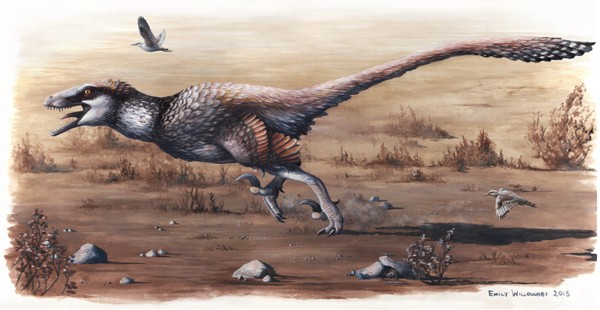Paleontologists discovered fossilized remains of a new giant raptor, where they claim that this dinosaur is the largest among the species ever uncovered that also has wing feathers.
This new dinsoaur was unearthed from South Dakota's Hell Creek Formation which is known for its fossil rich deposits as scientists now call this raptor the Dakotaraptor. The fossils suggest that the raptor could haven been 17 feet long which is also one of the largest raptors identified so far, according to researchers.
According to co-author of the study David Burnham from the University of Kansas, this new predator dinosaur can also fill the size gap between smaller theropods and larger tyrannosaurus species that thrived during that time.
The Dakotaraptor would have been the smaller than the Velociraptor which is about the size of a turkey and the Utahraptor which is an older cousin, estimated to measure around 22 feet long. Researchers also say that the Dakotaraptor's remains is about 66 million years old.
According to lead researcher Robert DePalma from the Palm Beach Museum of Natural History, even if it is relatively small in size, it was believed to move quickly due to its light built and to become just as vicious and lethal as other smaller theropods like the Velociraptor.
Apart from these dangerous predatory characteristics, the Dakotaraptor also caries a 9.5 inch claw that is curved on its middle toe, located at its hind legs, according to the fossils. DePalma also adds how the Dakotaraptor's fossilized forearms also reveal evidence of "quill knobs" which would have held feathers where he says that this is the first clear evidence of feather quills on a raptor forearm.
Researchers still believe that this raptor was too big to fly as the presence of feathers could indicate that the raptor mainly used these for mating rituals or even to keep eggs warm in a dino nest.
New findings of the Dakotaraptor present how flightless yet feathered dinosaurs probably went through several cycles of evolution that eventually resulted in modern birds.
This new study is published in the journal Paleontological Contributions.



























